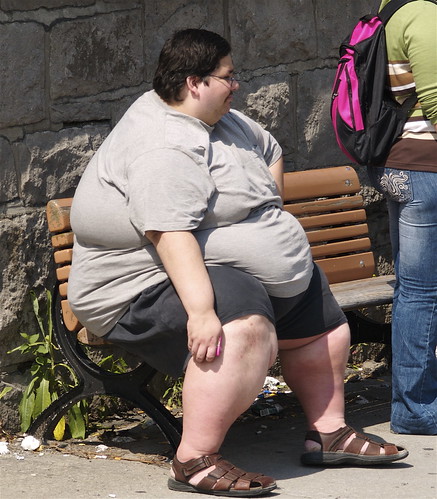This extreme move has sparked a lot of internet debate. Some criticize the foster care system as inadequate. Others point out the difficulty of healthy eating in today's society and the apparent hypocrisy of a government that declares pizza a vegetable but then blames parents for obese children. Still others point out that many children are obese and this decision could represent a slippery slope of states interfering with parenting decisions.
I agree that this decision raises some interesting (and frightening) questions about where a parent's responsibility ends and a state's responsibility begins. I also agree that blaming the parents' decisions fails to focus on larger cultural issues like access to healthy food. I don't know the child's individual situation, and it could be that this is a single-parent household, but I do find it frustrating that everyone is blaming his mother for being neglectful without much mention of his father's responsibility in his upbringing (whether he's present or not).
But what's most interesting to me about this story is the stock images that have been chosen to accompany the various blog posts and news reports.
From The Guardian
From CBC News
From Time
From News Tonight
From MedCity News
But perhaps the clearest example is this one, from Digital Journal. . .
 |
Here they are, a series of amputated body parts, mostly stomachs and thighs. Look at them, gaze upon them, but never consider the human beings to which they are attached.
Synecdoche is a rhetorical trope in which a whole is referred to by a part. For example, people may refer to hippies as "longhairs." The phrase "all hands on deck" is an example of synecdoche because it is not just "hands" that should appear, but the workers attached to them as well. It is also synecdoche--admittedly more vulgar--to refer to a man as a "dick" or a woman as a "cunt."
This visual synecdoche serves the same purpose as the verbal kind. By focusing on a part of something rather than the whole, we trivialize the other aspects that make a person complete. When we refer to a hippy as a "longhair," we are ignoring the ideas and philosophies connected to that identity and instead turn the entire association into a physical oddity. When we refer to the ship workers as "hands," we downplay the fact that they are real people capable of exhaustion and feeling and instead focus on the value they bring to utility--via their hands. And the more vulgar examples are pretty self-evident.
So what does it mean that, when we report on obesity or an obesity-related news story, we accomplish this same kind of desensitizing through an arguably more powerful medium? By removing the faces from these people, we dehumanize them. Look at the original Flickr photo of the man on the bench. Even with his face partially obscured from view, he is much more human, much more sympathetic, much more whole than the edited version.
If you believe that the obesity epidemic is a real problem that needs to be solved, this kind of rhetorical positioning is not helping your cause. As many of the people responding to the Ohio custody case have mentioned, the causes are numerous and the solutions have to be holistic. Literally removing the humanity from the picture, reducing people to their fat, does nothing to encourage a multi-faceted or holistic discussion. This image tells us that the fat is all that matters. It's not the food; it's not the exercise; it's not the socioeconomic factors that determine access to food and exercise; it's not the education; it's not the genetic factors; it's not the unrealistic societal standards of beauty. It's fat. Fat that's the enemy. And this bombardment of amputated bellies also teaches us to view the world through that lens. It teaches us to look at people who are overweight and ignore everything but their size.
If you believe that the discussion of the "obesity epidemic" itself is a prejudicial attack on people who are fat, then this visual synecdoche goes a long way toward supporting those claims. This is a dehumanizing and cruel portrayal of human beings that promotes desensitization and allows cruelty and ridicule with ease.
Whatever you think about that little boy from Ohio, please remember, he is a person. He is not a floating belly. He is not a pair of thighs. He is a human being who feels and loves and probably misses his mother right now.







The 'headless fatty' concept has been blogged about extensively in FA blogs.
ReplyDeleteCheck out
http://www.charlottecooper.net/docs/fat/headless_fatties.htm
http://www.bigfatblog.com/headless-fatties-our-modern-folk-devils
http://kateharding.net/2009/02/06/open-thread-headless-fatties/
There are several people in FA circles who are working to compile a collection of images of fatties *with* heads that will be free for media outlets etc to use. I have had photos of me used to accompany fat positive media releases (i.e. re fat positive academic studies etc)
Thanks for the links! And what a great movement to compile photos that show people as people. I'd noticed the photos accompanying obesity articles before, but it wasn't until this story that they stuck out as so very pervasive. I'm sure I'll notice them everywhere now.
ReplyDeleteI was clueless about the fact that obesity was most often portrayed as "headless" - it just went past my radar. Thanks for pointing this out and I will never look at those images the same way again! There are ALWAYS heads/life stories attached to those bodies.
ReplyDelete